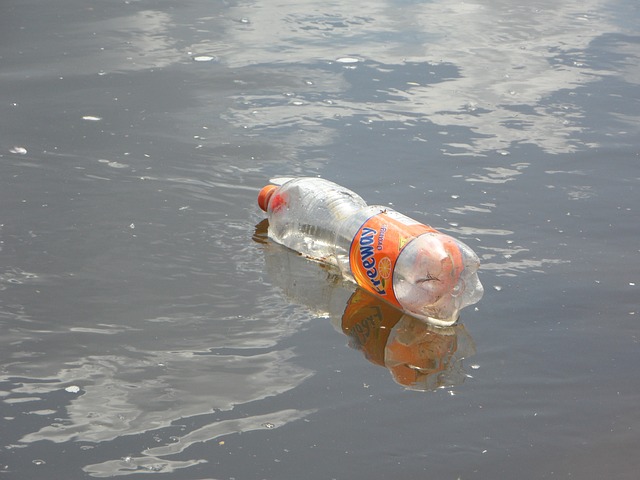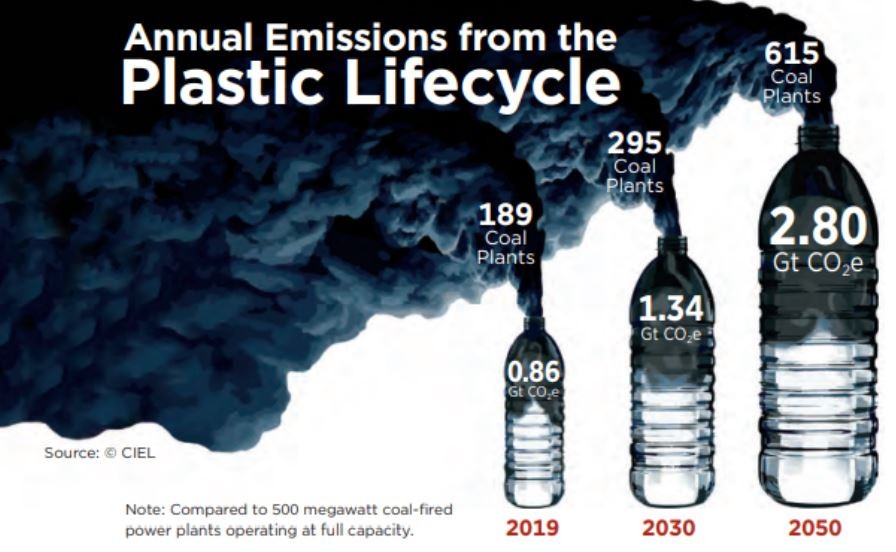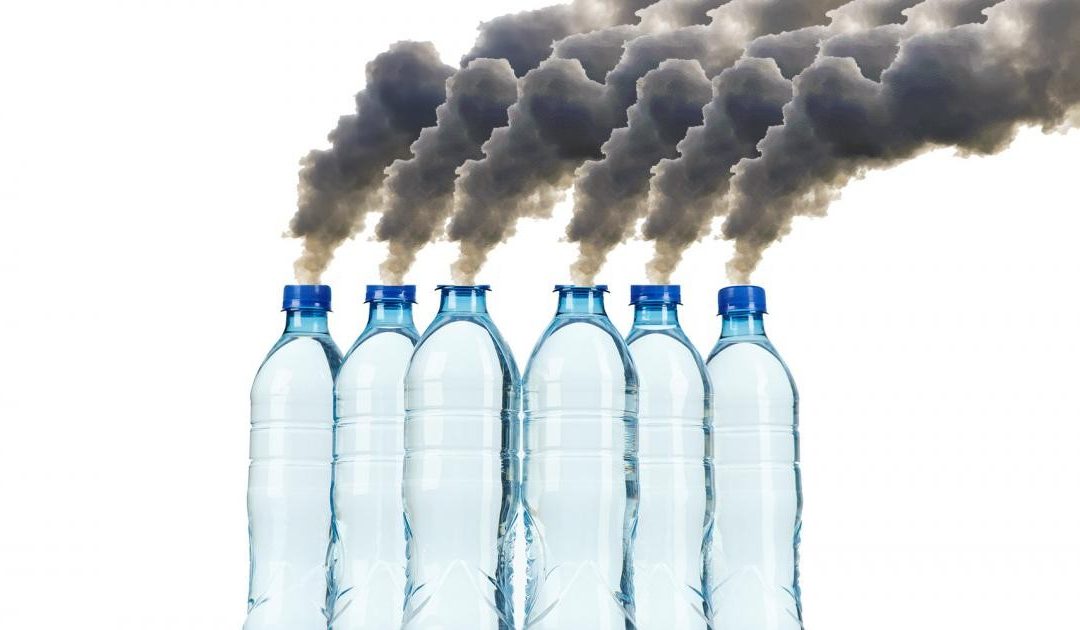There are many important reasons why carbon emissions should be reduced. Such emissions from carbon dioxide and methane are heat-trapping gases (or greenhouse gases) and an excessive amount of these cause global warming and climate change. Greenhouse gases are a problem for the world as they can lead to a wide range of environmental and health issues, from extreme weather conditions to respiratory diseases in humans.
Our dependence on fossil fuels only increases the effects of global warming in the world and across various ecosystems. While climate action can go a long way in highlighting the issues and helping promote incentives such as reforestation, energy efficiency and renewable energy projects, one of the key things that needs to be done is to reduce global emissions. Countries such as those in the European Union have introduced legislation to start decarbonizing economies to achieve a net-zero target. However, a lot still needs to be done to achieve a reduction in carbon use to meet these goals.
What Can Be Done About Carbon Emissions?
Most scientists agree that there is a need to significantly reduce carbon emissions by both individuals who produce carbon through their actions and consumption (carbon footprint), to industries that create a large amount of these Greenhouse gases (GHGs) as a by-product of their business activities.
There are several ways that emission reductions are tackled, from changing people’s attitudes as to what they consume, to recycling and bigger changes, such as introducing new technology that puts less carbon emissions into the environment.

It is important to understand that there is no quick fix nor one simple solution that will solve our carbon emissions problem completely: instead it is a combined effort utilizing a wide range of different methods, from carbon reduction technologies to tax incentives and legislation that will be needed. When these are all put together, they can reduce the amount of carbon that is produced globally, for the benefit of the entire world.
One of the ways some industries tackle carbon emissions is to use carbon credits to either limit or to ‘carbon offset’ their Greenhouse gas emissions.
Carbon Offsetting and Carbon Credits
One of the first things to understand is that while carbon offsetting and carbon credits have similar meanings, they aren’t quite the same thing. Often both terms are used to mean similar strategies, but there is a difference.
Carbon offsetting is an action or activity that means compensating for carbon dioxide emissions through projects such as investing in forestry schemes. In this example, trees are planted to reduce deforestation, absorb carbon dioxide in the atmosphere, and thus ‘offset’ carbon creation. These projects are designed to actively work on reducing carbon or to store carbon in the environment.
Carbon credits are different. A carbon credit is a permit that allows a country or organization to generate a certain amount of carbon. Typically, one carbon credit is the equivalent of one metric ton of carbon dioxide. The generation of a carbon credit is governed by rules and standards which are transparent and supervised by regulatory bodies. What makes carbon credits useful is that these can be traded with another country or organization for their environmental purposes (i.e., compliance with regulation) and in a manner and cost that makes it economically feasible for them to do so.
This form of carbon trading or emissions trading is very common. For example, it is common for rich countries to buy emission reductions or carbon credits from developing countries which do not use their carbon emission quotas by virtue of them having less emissions of Greenhouse gases.
Types of Carbon Credits
It is important to understand that Governments may operate a mandatory carbon capping scheme based on the carbon targets and Greenhouse gas quotas that they want to reach. These mandatory restrictions are placed on industries and operators that generate pollutants and are regulated.
Mandatory schemes stem from the agreements made at the time of the Kyoto Protocol. The Kyoto Protocol were a set of accords that was signed by a number of countries to put caps and quotas on the emission of Greenhouse gases. These quotas are then used by a country to assign amounts of Greenhouse gases an industry and its operators can use.
As already mentioned, one aspect of the quota system is that it is flexible. This means that countries that generate more Greenhouse gases can purchase the excess quota from another country, usually a developing country. This quotas are distributed among industries and is trickled down to a company level. One company that produces Greenhouse gases can acquire more credits from another organization that has not used their fully assigned quota.
With this cap-and-trade system, a company buys a carbon credit in advance, to produce one ton of CO2e pollution and then surrenders the credit back. The amount of carbon that is produced is matched by the carbon credit and will support the company’s predetermined quota or agreement. This is how Governments can control the number of credits that are available and in turn control how much carbon dioxide is produced.
With the alternate and more common carbon offsetting schemes, a company trades in carbon offsets where the CO2e has already been reduced by the offset project and any third-party that purchases the offset does so to account for the pollution they have already produced. The pollution that is produced isn’t reduced- it remains at the same level. Effectively, companies are paying for someone else to tackle carbon emission reductions while they continue to produce the same amount of carbon (if no other GHG emissions incentives are in place).
Who Issues Carbon Credits
Carbon emission schemes may be either classified as voluntary (such as the Voluntary Emissions Reduction (VER) scheme) where a company undertakes a voluntary carbon program as a part of their commitment to the environment, or compliance or mandatory schemes which are legislated schemes that aim to reduce carbon emissions on a per-country, per-project basis (i.e., the Kyoto Protocol’s Clean Development Mechanism (CDM) which deal with Certified Emissions Reductions (CER) .
The challenge with voluntary carbon credits is that, as the name suggests, they are voluntary and can be costly for an organization to partake in, given that the market is unregulated. With recessions and drops in profits, one area that organizations may look to sequester budgets is in their environmental projects and initiatives.
For regulatory compliance schemes, the Government issues carbon credits to carbon producing companies who operate within a set of quotas and guidelines and where the credit prices are dictated by the market.
How to Buy Carbon Credits
For companies that operate under Government legislation and quotas, it is possible to purchase additional carbon credits from other polluters. This is referred to as the cap-and-trade market. These can be purchased at auction or from other polluters directly.
Companies use this regulated exchange platform to trade carbon credits. These trading schemes are a perfectly legitimate mechanism, but for companies that must follow a mandate, they must ensure that they have enough carbon credits to cover the amount of pollution they have generated.
However, where it gets complex is that not all carbon credits are considered equal, and the ‘quality’ of the carbon credits is determined by the carbon credit price that they sell for on the trading market. For one, the price a carbon credit would sell for would be determined by such drivers as the country where they are originating from, the industry, the reputation of the company generating the credit, the type of project, and the ability of the project owner to deliver the emissions reductions and get them issued to the market.

For those companies or even individuals that want to reduce their carbon footprint using the voluntary carbon market, there are a number of companies that can sell carbon credits. These companies buy their carbon credits from carbon development companies directly.
This third-party carbon credit market is ultimately where companies and organizations that struggle to achieve carbon neutrality through sustainability incentives voluntarily go to when they are looking for carbon mitigation.
There are several ways to buy carbon credits. One of the most common methods is for a company or individual to work directly with the carbon credit scheme or the project itself. For example, this could be a company that operates a woodland and has a tree planting or forestry scheme. These contracts often take the form of Emission Reduction Purchase Agreements (ERPAs) and are available from individual carbon retailers.
How to Sell Carbon Credits
Cap and Trade quotas can be sold via the official regulatory trading market.
For voluntary schemes, project developers, landowners or farmers can often sell carbon credits on the open market to a company that operates and trades in carbon credits. Because the types of carbon credit projects may vary the price that a seller can obtain from their carbon credit scheme varies. For example, the carbon price achieved from planting a woodland, may be different to that obtained from peat restoration or even plastic recycling.
Carbon Credits and Plastic Recycling
One important carbon market where carbon credits can be created is in the world of plastic recycling. Since plastic is a huge creator of greenhouse gases and carbon emissions, any project that can reduce the amount of plastic waste going to landfill can have a positive impact. This is especially important for single use plastic that is often just used once and then thrown away.
Unfortunately, since much of the plastic we use is disposed of in landfills the carbon cost for this type of material is very high. Therefore, plastic recycling schemes are crucial. Not only do they use less raw materials and produce less carbon than by creating new plastic, but they also reduce the dependence on landfills, helping to protect the environment.
Since it uses a lot less energy in the recycling process to reuse plastic (for example the raw materials have already been mined or produced) it is possible for plastic recycling schemes to produce carbon credits since carbon emissions are reduced since the plastic that is manufactured has a lower carbon footprint.
In the plastic recycling industry these are often referred to as ‘plastic credits’, which operate in a similar way to carbon credits.
Understanding Plastic Credits
Plastic credits are a mechanism that are similar to carbon credits. Companies can buy plastic credits to cover the amount of the plastic that they use and produce. As with many of the carbon credit schemes, they are currently voluntary, and a company or organization makes a voluntary commitment to buy plastic credits as a part of their environmental policy or strategy, and not as a result of regulation.
A plastic credit is generated by companies, organizations and schemes who are actively collecting and recycling plastic. When a set amount of plastic is collected and recycled then this accounts for a plastic credit which can then be sold to a company that is manufacturing or using plastic.
There is a lot more to learn about Plastic Credits. To find out more about how plastic credits work, read our guide to Plastic Credits.
Find out more about how Plastic Collective works and get latest news and info about Plastic recycling, clean energy and the effects of climate change, by subscribing to the Plastic Collective newsletter.


